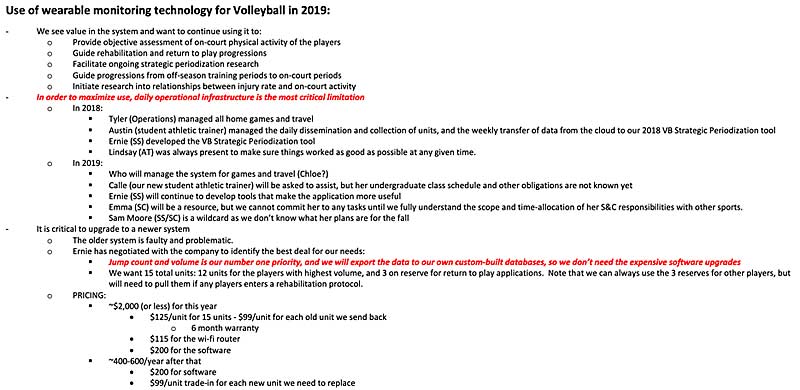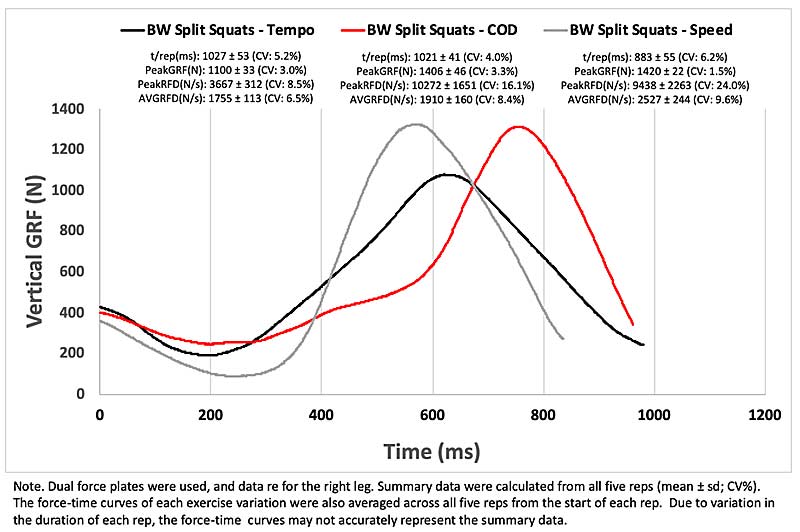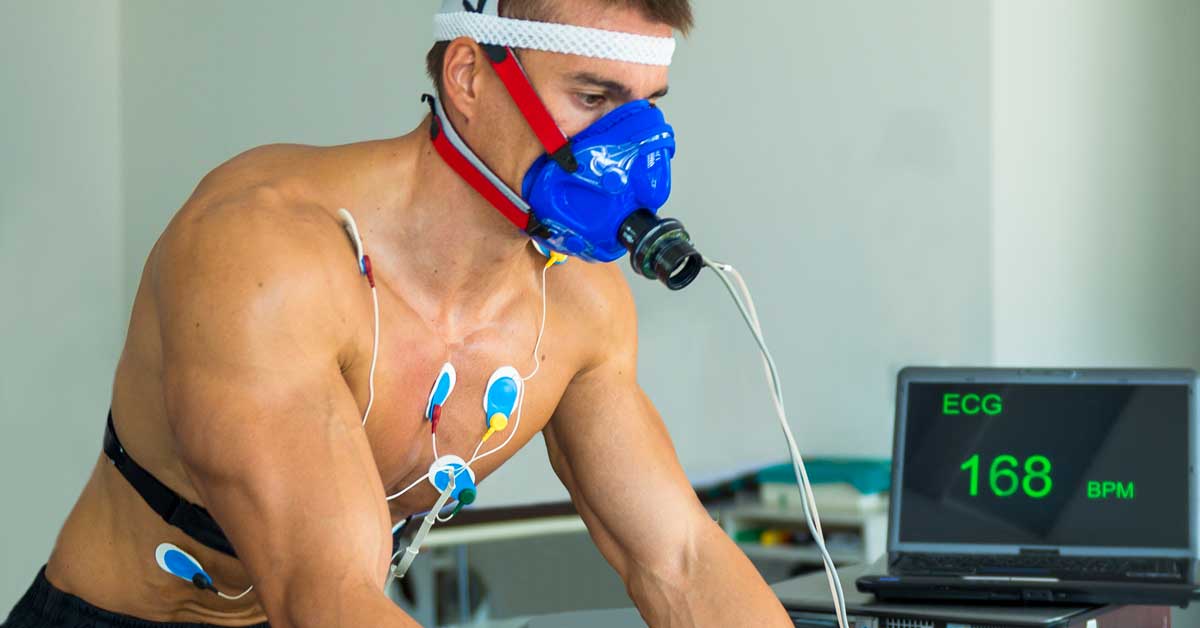Ernie Rimer is in the 20th year of his career working in elite sports. He currently serves University of Utah Athletics as Director of Sport Science. Beyond his role at Utah Athletics, he is a Ph.D. student in Utah’s Department of Exercise & Sport Science, a partner in the performance software company FYTT, and a sport science consultant for various elite sports authorities. Rimer has also taught the undergraduate Biomechanics course at Utah. Prior to Utah, Rimer was a Strength & Conditioning Specialist in the High Performance Department of the U.S. Ski and Snowboard Association.
Freelap USA: Repeated sprint ability is a tricky topic for many coaches, as the balance between aerobic capacity and speed is tricky to test and train over a career without careful record-keeping. What mistakes do you see coaches, usually team coaches, make when athletes look slow on the pitch or court? Athletes often look out of shape because they are tired or slow, not because they are not fit.
Ernie Rimer: Repeated sprint ability is a complex physical attribute I examined for part of my dissertation. With regard to running, it appears that the fastest athletes with the greatest endurance running performance will have greater repeated sprint ability. The same is true for cycling assessments among those with the greatest peak power and critical power.
In other words, the most powerful athletes with the greatest aerobic fitness will have superior repeated sprint ability compared to SLUGGs (slow, unfit guys or gals), as I like to call them, who will have inferior repeated sprint ability. Moderate repeated sprint ability is expressed by those with various combinations of speed and fitness: moderate speed and aerobic fitness, exceptional speed and poor aerobic fitness, poor speed and exceptional aerobic fitness, etc.
By continually assessing athletes with a valid repeated sprint test or valid speed and aerobic endurance tests, professionals can identify exactly what training an athlete needs to improve repeated sprint ability. On a side note: The yo-yo test varieties are not repeated sprint tests.
You stated, “Athletes often look out of shape because they are tired…not because they are not fit.” I completely agree. Over the past few months, I have repeatedly told team sport coaches, “Fatigue can make the fittest athlete look out of shape.” When athletes “look out of shape,” a coach’s response is often to do more conditioning. Sometimes, that’s the correct answer, but it is a mistake to assume that more conditioning is always the answer.
Responding to an athlete who looks out of shape is always circumstantial, and our responsibility as sports scientists or S&C coaches is to identify the issue and offer the best possible solution. Share on XAmong other things, rest, better nutrition and/or hydration, or time for acclimation may be the answer. Responding to an athlete who looks out of shape is always circumstantial, and it is our responsibility as sport scientists or strength and conditioning coaches to identify the issue and provide the best possible solution. Personally, I like to review any available data we have on the athlete (recent physical assessment scores, body composition, etc.) to determine if the athlete is truly “out of shape.” I ask colleagues what they’ve observed or if they can point out any data through their lenses. I also consider recent circumstances with questions like:
- Is this a new physical stimulus?
- Is this a transition period?
- Has there been an acute environmental change (altitude, temperature, humidity, etc.)?
In summary, rather than assuming that more conditioning is always the answer, coaches can take a step back and count on their highly educated and knowledgeable support staff to carefully consider their concerns and offer a solution that will provide the greatest possible benefit to the athlete. The bad news is that if a lack of conditioning is the answer, it can take days, weeks, or even months for that athlete to get there. The good news is that many of the other options can solve the issue faster.
Freelap USA: You have used modeling for evaluating sprint speed with track athletes. Can you explain the difference between time trialing or testing and modeling for high school coaches who want to take their training to the next level?
Ernie Rimer: The main difference between time trialing and modeling is that a time trial can only provide average values (e.g., average velocity) from one split to the other, whereas modeling can provide more intimate information that can inform the coach and benefit the athlete.
As you pointed out, I have used modeling to evaluate female sprinters. Our main goal was to evaluate if our sprinters continued to accelerate through at least 35 meters. Research among female sprinters is limited, but the IAAF Biomechanical Reports from major events provide great information.
From those reports and the citations therein, we learned that female sprinters (100m time range: 10.54-13.08 seconds) hit top speed, on average, at around 48 meters during 100-meter sprints. Obviously, there is variance to that, but we reasoned that, based on our sprinters’ abilities, they should be able to accelerate through at least 45 meters. By capturing their splits at 5 meters, 10 meters, 15 meters, 25 meters, and 35 meters, my colleague Paul Mentele helped me model their efforts using spreadsheets made available by Pierre Samozino and colleagues.
Admittedly, I don’t have a lot of data using this technique. That’s why I was grateful to you and Eamon Flanagan, among others, for jumping on a call with me after we discussed our method on Twitter. In taking your collective advice, I ended up adding a chart to Dr. Samozino’s modeling spreadsheet so that we could illustrate velocity over distance. There was more to it than that, but this step made it possible for the coach and athletes to clearly visualize whether or not they continued to accelerate through at least 35 meters.
We also took your advice and extrapolated the function to 100 meters so that we could estimate each sprinter’s potential top speed from the model. Setting some potential validity (with extrapolation) issues aside, that was a cool step because it gave some indication of what each sprinter could accomplish with more practice and training. Overall, it provided fairly actionable information, and the coach was pleased.
Modeling sprint efforts can inform coaches a lot more than basic splits. The good news is that anyone with the ability to capture accurate splits can easily model the efforts, says @ErnieRimer. Share on XThe main reason I shared that anecdote is because modeling sprint efforts can inform coaches a lot more than basic splits. The good news is that anyone with the ability to capture accurate splits can easily model the efforts. If you’re not a math person, you can simply plug those splits into the same spreadsheets we freely accessed. It has been an invaluable learning experience for us, and I know it will be for others as well.
Freelap USA: Jump testing with force plates is important and popular, but can you delve into the best way to get the most out of horizontal jumping? Due to the skill component, the entry point to horizontal jumping is higher (no pun intended), but due to the cost and transfer should be used more with speed athletes that don’t have jump equipment at all.
Ernie Rimer: You’re going to hate my answers to this question.
I don’t have a lot of experience assessing horizontal jumps using a force plate, in general, let alone for speed athletes. The first force plate I had access to (beginning in 2007) only measured vertical forces. Later on, we acquired a force plate that measured both vertical and horizontal forces, but we never adopted a consistent horizontal jump testing protocol using it—probably because we never took the time to build a platform to provide a flush take-off and landing position.
We have regularly assessed horizontal jumps using more traditional methods, such as with a tape measure or with an OptoJump. One of my greatest concerns with horizontal jump testing is when athletes complain of knee pain when they sacrifice their landing for greater distance—when their butts rapidly drop to the ground when they land. I haven’t witnessed a serious injury during unilateral or bilateral horizontal jump testing, but I prefer vertical jumps for safety, if nothing else.
To provide some support for this, I just did a quick hack using our internal data to test the hypothesis that there would be redundancy in the relationships between sprint performance and either vertical or horizontal jump performance. I determined the correlation among vertical jump, broad jump, and 40-yard sprint performance among 84 Utah Football wide receivers, cornerbacks, and safeties we’ve had come through the system since 2002 and who we all have data on.
I chose those positions because the change in BMI among the big skill and giant skill players would obviously influence the data. The correlation coefficient between vertical jump and the 40-yard sprint (r = -0.51) was fairly similar to that between the broad jump and the 40 (r = -0.57), whereas there was a much stronger relationship between the vertical jump and broad jump (0.82). Of course, I did this analysis quickly, solely to help answer this question, but my quick hack supports a degree of redundancy in that either test can be used.
Setting assessment aside, I believe your question calls attention to whether or not horizontal jump training elicits a greater transfer coefficient to sprint performance than vertical jump training. I suppose the biomechanist in me would suggest that muscular force produced by the locomotor system doesn’t care about whether there are greater horizontal or vertical force vectors. The physiologist in me would suggest that we provide training stimuli to elicit adaptations that would be characteristic and beneficial to specific actions in sport—sprinting, in this case. Indeed, I am greater proponent of dynamic correspondence than the force-vector theory.
With that said, a recent meta-analysis (Moran and colleagues, 2021) reported that horizontal plyometric training was equally as effective as vertical plyometric training in improving performance in tasks with a greater vertical force component, but more effective in improving performance in tasks with greater horizontal force components like sprint acceleration. For this reason, I will stand behind the research and support the efficacy of horizontal jump training to improve sprint acceleration. In conclusion, I suppose the coach in me would suggest that horizontal jump training may provide a motor-skill learning effect; that is, more practice at moving your body across the surface will help you get better at it faster (pun intended).
Freelap USA: Monitoring is important, but it sometimes can cause more problems than it’s worth. Can you share errors that are common in departments with monitoring athletes that depict the real-world challenges schools face? While it’s ethically responsible and valuable to monitor, what pitfalls and struggles should the team be aware of, so they are adequately prepared?
Ernie Rimer: There are many errors we make when it comes to monitoring athletes. I won’t name them all but would like to comment on two that immediately come to mind. First and foremost, the greatest error revolves around blind adoption of technology and software. To correct this error, focus on the problem first. What is the issue you are trying to solve? Now, go find the data capture tool that will allow you to monitor and eventually manage that issue.
When it comes to monitoring athletes, a major error that organizations make is assuming that monitoring, decision-making, and action happen all by themselves, says @ErnieRimer. Share on XAnother major error that organizations make is that they assume monitoring, decision-making, and action happen all by themselves. Establishing high-quality data capture, management, reporting, and intervention can be very costly, both financially and logistically. To correct this error, support teams and coaches should simply plan out their strategy before adopting it, and then adjust after doing so. To provide an example, I’ve included a screenshot of a plan we outlined for Utah Volleyball before we made the decision to renew their wearable tech effort:

As you can see, there is a lot that goes into a solid monitoring strategy. To get the most out of it, support teams must plan to provide maximum value at minimal financial or operational cost.
Freelap USA: Training load is often seen as something on a GPS device, but the weight room is rarely talked about with external and internal loading. Can you share how you think coaches can benefit from monitoring the weight room better by managing more than just tonnage? It seems that things get complicated with explosive training such as jump squats and plyometrics, which are not easily measured like squats and bench presses.
Ernie Rimer: This is a very complex issue that deserves much more attention from our field. Session RPE may be the simplest way to monitor internal load for plyometric and resistance training sessions. The complexity and problems arise when trying to quantify the external load of those sessions.
First and foremost, tonnage can only be valid if it is quantified for exercises that incorporate the same muscles and limb segments. For instance, if an athlete performed three sets of 10 squats using 200 pounds (volume load: 6,000 pounds), four sets of 10 bench presses using 150 pounds (volume load: 6,000 pounds), and four sets of 10 pull-ups using 150 pounds (a 160-pound athlete minus the estimated weight of his forearm segments), is it even valid to state that the total tonnage was 18,000 pounds? (I feel foolish even asking the question.)
I believe a lot more work needs to go into the assessment of external loading during resistance training. Converting those volume loads to intensity relative volume is a step in the right direction, but the method still misses the fact external loads need to be calculated for each muscular group movement action, if not each joint-specific action.
To your point, the issue becomes much more complicated when you attempt to add explosive training exercises like jump squats and plyometrics to the equation. Currently, I’ve been trying to wrap my mind around this and still don’t have a solution. With greater research and proper dissemination, maybe biomechanics can eventually provide an answer. Perhaps the ground reaction force pattern of a repetition can be used to get closer to estimating the external load of an exercise?
I believe a lot more work needs to go into the assessment of external loading during resistance training, says @ErnieRimer. Share on XTo provide a real-life example, at the onset of the pandemic in March 2020, I brought the force plates home from work and started experimenting with different techniques for the same bodyweight exercises. Indeed, most of our athletes needed bodyweight routines because gyms or proper gym equipment weren’t immediately available to most. My goal was to maximize ground reaction force and rate of force development by simply modifying my exercise technique. I tested three techniques:
- Tempo – Just “repping it out” without any special instruction.
- Change of direction – Control the eccentric, then rapidly change directions by pushing through the floor as hard as possible.
- Speed – Move through the entire rep as fast as possible while pushing through the floor as hard as possible.
I reasoned that the change of direction technique was the best option. First and foremost, I didn’t feel like my patella was going to splatter on the wall across the room like it would when doing the speed technique—safety first. More importantly, the peak ground reaction force and rate of force development were similar to the speed technique, but the impulse of the repetition was greater because it took more time to perform a repetition:

Once again, this was just another one of my quick experiments to try to optimize our efforts. I thought it might be an interesting way to answer this question, because I simply profiled different techniques in order to gauge which ones elicited greater external load. More research along these lines may be able to help us more accurately quantify the external load of different plyometric and resistance training exercises.
By categorizing exercises into their movement patterns and profiling them using ground reaction force, we can get closer to a solution. The reality is, however, that altering technique can vastly alter joint-specific loads. Profiling exercises to that extent won’t be readily possible until coaches can easily integrate kinematic and kinetic data during training into techniques like inverse dynamics.
If that day ever comes, our ability to assess external load during resistance training will be much improved. Even then, it will be difficult to instantly quantify and monitor in real time. And that’s where I hope the hardware and software technology worlds will collide and make it easy for the masses—perhaps we can save that think tank for another interview.
Since you’re here…
…we have a small favor to ask. More people are reading SimpliFaster than ever, and each week we bring you compelling content from coaches, sport scientists, and physiotherapists who are devoted to building better athletes. Please take a moment to share the articles on social media, engage the authors with questions and comments below, and link to articles when appropriate if you have a blog or participate on forums of related topics. — SF




